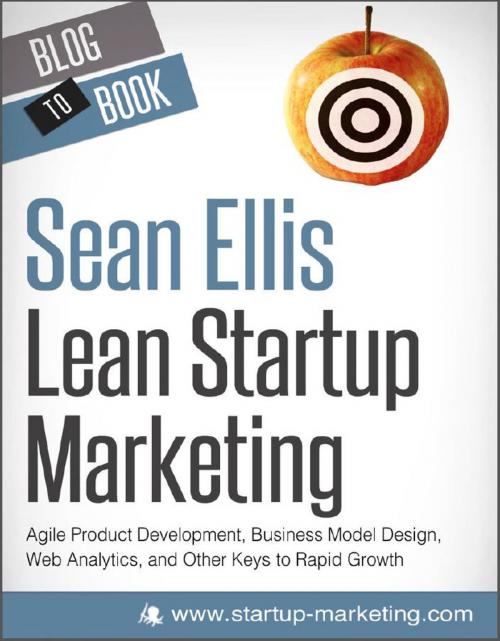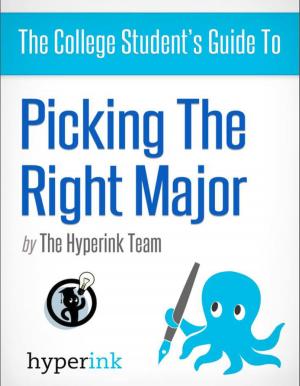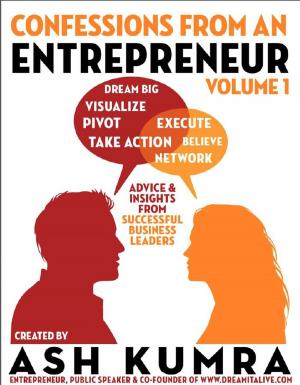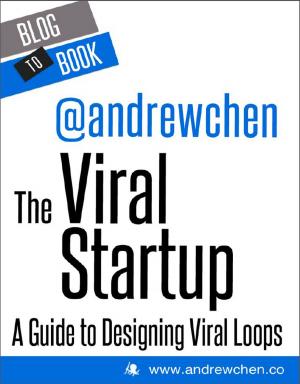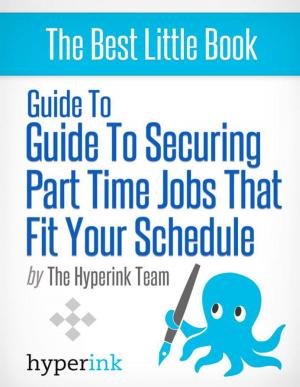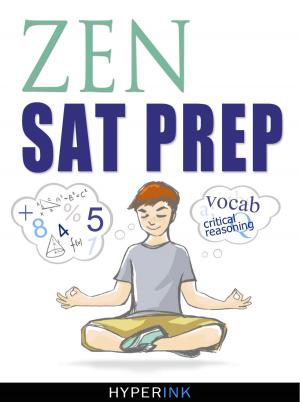Lean Startup Marketing: Agile Product Development, Business Model Design, Web Analytics, and Other Keys to Rapid Growth
Business & Finance, Career Planning & Job Hunting, Entrepreneurship, Entrepreneurship & Small Business| Author: | Sean Ellis | ISBN: | 9781614645733 |
| Publisher: | Hyperink | Publication: | September 11, 2012 |
| Imprint: | Hyperink | Language: | English |
| Author: | Sean Ellis |
| ISBN: | 9781614645733 |
| Publisher: | Hyperink |
| Publication: | September 11, 2012 |
| Imprint: | Hyperink |
| Language: | English |
ABOUT THE BOOK
Each new startup I help take to market offers many potential rewards, but there are risks too.
The most obvious reward is the financial upside of equity in a successful company. But there are less tangible benefits like the thrill of being part of a team realizing the potential of their vision. Probably the most important long-term reward is that each startup success enhances my reputation and opens doors to additional startups with strong potential - while improving the skills I need to maximize these opportunities. This allows me to continue doing the most enjoyable "job" of my life.
But the risks are very real. A startup in a bad space with a bad product won't be much fun to market - and I'll probably fail. And when the company flops, it will damage my reputation. Enough damage to my reputation and I'll have to figure out a new pursuit. Of course most people recognize that it's impossible to have a perfect startup record, but the opportunity cost of committing to the wrong startup means I won't have the bandwidth to take on a potentially hot company.
Given these rewards and risks, I increasingly find myself evaluating opportunities with a VC-like diligence. I've created an opportunity assessment worksheet that identifies key risks in the business. The standard format makes it easier to compare opportunities. One of the biggest risks of any business is the inability to raise capital, so early on, I set the requirement that I'll only work with companies that have recently raised a series A or large seed round. A very good VC can also help improve the odds, as they've achieved a better track record with their historical picks (and many would argue their "added value").
Beyond general business risks, I obviously need to be confident that it is a marketable business and one on which I can make a meaningful impact. The ideal category is what I refer to as a "disruptor" startup. These are businesses that enter an existing category with a breakthrough feature or very disruptive pricing model. My iterative, metrics driven marketing approach is perfect for helping these types of businesses discover their ideal market, differentiate appropriately and identify viable customer acquisition drivers.
EXCERPT FROM THE BOOK
Demand Harvesting - The Easiest Driver For Startups
I always begin a new startup marketing assignment by looking for any untapped existing demand. Demand harvesting is much easier than demand creation - and it has a faster sales cycle. You don't have to convince someone they need your category of product, you just need to be easier to find/buy and have a better value proposition than the other guys.
The first question to ask is "where would someone seek my product category?" Twenty years ago the most obvious answer would have been the yellow pages, but today it is Google. A lot of information has been published on getting the most out of SEO or SEM and there are also many experts you can tap in this area. Beyond Google, I've found it is helpful to survey existing users for other places they would potentially look. It's great news when discover healthy demand for your product category.
The next step is to analyze the solutions competing for that demand. The best situation is to discover heavy unmet demand and no competition. That is about as likely as winning the lottery, so don't count on it. More realistically, there will be a few companies with varying offers competing for that demand. In this case, you should hope for weak execution from these existing competitors. If you can be significantly more effective at extracting money from each prospect, you can afford a more prominent promotion at the initial point of connection and begin capturing market share.
Buy the book to read more!
CHAPTER OUTLINE
...and much more
ABOUT THE BOOK
Each new startup I help take to market offers many potential rewards, but there are risks too.
The most obvious reward is the financial upside of equity in a successful company. But there are less tangible benefits like the thrill of being part of a team realizing the potential of their vision. Probably the most important long-term reward is that each startup success enhances my reputation and opens doors to additional startups with strong potential - while improving the skills I need to maximize these opportunities. This allows me to continue doing the most enjoyable "job" of my life.
But the risks are very real. A startup in a bad space with a bad product won't be much fun to market - and I'll probably fail. And when the company flops, it will damage my reputation. Enough damage to my reputation and I'll have to figure out a new pursuit. Of course most people recognize that it's impossible to have a perfect startup record, but the opportunity cost of committing to the wrong startup means I won't have the bandwidth to take on a potentially hot company.
Given these rewards and risks, I increasingly find myself evaluating opportunities with a VC-like diligence. I've created an opportunity assessment worksheet that identifies key risks in the business. The standard format makes it easier to compare opportunities. One of the biggest risks of any business is the inability to raise capital, so early on, I set the requirement that I'll only work with companies that have recently raised a series A or large seed round. A very good VC can also help improve the odds, as they've achieved a better track record with their historical picks (and many would argue their "added value").
Beyond general business risks, I obviously need to be confident that it is a marketable business and one on which I can make a meaningful impact. The ideal category is what I refer to as a "disruptor" startup. These are businesses that enter an existing category with a breakthrough feature or very disruptive pricing model. My iterative, metrics driven marketing approach is perfect for helping these types of businesses discover their ideal market, differentiate appropriately and identify viable customer acquisition drivers.
EXCERPT FROM THE BOOK
Demand Harvesting - The Easiest Driver For Startups
I always begin a new startup marketing assignment by looking for any untapped existing demand. Demand harvesting is much easier than demand creation - and it has a faster sales cycle. You don't have to convince someone they need your category of product, you just need to be easier to find/buy and have a better value proposition than the other guys.
The first question to ask is "where would someone seek my product category?" Twenty years ago the most obvious answer would have been the yellow pages, but today it is Google. A lot of information has been published on getting the most out of SEO or SEM and there are also many experts you can tap in this area. Beyond Google, I've found it is helpful to survey existing users for other places they would potentially look. It's great news when discover healthy demand for your product category.
The next step is to analyze the solutions competing for that demand. The best situation is to discover heavy unmet demand and no competition. That is about as likely as winning the lottery, so don't count on it. More realistically, there will be a few companies with varying offers competing for that demand. In this case, you should hope for weak execution from these existing competitors. If you can be significantly more effective at extracting money from each prospect, you can afford a more prominent promotion at the initial point of connection and begin capturing market share.
Buy the book to read more!
CHAPTER OUTLINE
...and much more
